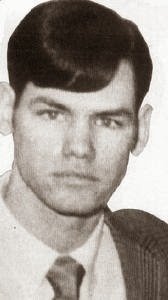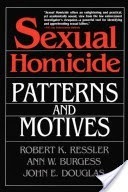Gregory A. Fournier's Blog, page 37
May 29, 2014
Retrospective John Norman Collins Serial Killer Profile - Part Four of Four

Compiling a criminal profile after an offender has been captured is like forecasting yesterday's weather tomorrow. It takes little skill and runs counter to the purpose of profiling which is the apprehension of a prime suspect. Still, by reversing the process, I hope to develop a convincing profile of serial killer John Norman Collins (JNC).
JNC was charged and convicted of the sex slaying of Karen Sue Beineman in January of 1970. Karen was a freshman at Eastern Michigan University in July of 1969 when she willingly took a motorcycle ride from a handsome stranger who seemed harmless enough. She was never seen alive again.
Convicted of Karen's murder, JNC was believed by the court of public opinion to be responsible for the murders of at least six other women, though he was never formally charged with any of them. Washtenaw County Prosecutor William Delhey held the other cases in abeyance against the day that JNC would try to maneuver his way out of prison. He did not want to take a chance that Collins would ever get released without serving his full life sentence.
Because Collins was charged and convicted of only one murder, he is not officially considered a serial killer in accordance with FBI guidelines. His case has largely escaped public notice outside of Michigan and fallen into obscurity. That does not change the reality that he murdered more than one woman in the Ypsilanti/Ann Arbor area.
In addition to the Washtenaw County murders, JNC was indicted by a Monterey, California grand jury for the murder of seventeen year old Milwaukie, Oregon resident Roxie Ann Phillips. This murder case had hard physical evidence to link Collins to the victim. It was the strongest case against Collins, but Michigan Governor William Milliken denied California Governor Ronald Reagan his extradition request and California dropped the case.
 George Bush Sr, Gerald Ford, Ronald Reagan, and William Milliken
George Bush Sr, Gerald Ford, Ronald Reagan, and William Milliken***
Of the four FBI Behavioral Science Unit classifications for serial murderers, the Anger-Retaliatory Rape/Murderer and the Anger-Excitation Rape/Murder classifications provide the most revealing profiling characteristics relevant to JNC. Each will be handled separately. Serial killers who represent in more than one category are called "mixed." John Norman Collins is one of those.
Anger-Retaliatory Rape/Murder profile traits:Violent sexual assault with elements of "overkill." (All seven victims.)The fatal hostility may be directed at a mother, wife, or some dominate female who has belittled, humiliated, or rejected the subject. (JNC may have had repressed anger towards his domineering mother, or he felt anger when he was rejected by his high school sweetheart. It was recently learned that Collins' first intimate girlfriend at Eastern Michigan University turned up pregnant from another guy and she dropped him.)A substitute victim is chosen who usually comes from the general area where the aggressor lives or works. (Four of the seven murdered young women lived within blocks of JNC.)The substitute victim is chosen while the murderer is conducting his daily routine, as when cruising his neighborhood or a public place, the aggressor may find a potential victim who reminds him of his mother or girlfriend. (Five of the seven victims were local.)The scapegoating retaliation does not eliminate the direct source of hate, so it needs to be episodically repeated. (Six of the seven victims.)Often uses a ruse to get the victim inside an enclosed place. Once inside, the victim is isolated and the killer confronts her. (The Karen Sue Beineman murder.)Beating around the face and mouth in response to the victim's rejection. As the assault becomes more combative, weapons of opportunity are used to brutalize the body. (All of the seven murders.)The body is often placed in a submissive position. (Three of the seven victims.)The crime scene tends to be unorganized following the aggressor's intense anger venting. (Three of seven murders.)The perpetrator often takes a small trinket or souvenir. (At least five of the seven but thought to be more.)When the sexual assault and murder is deemed a success, the perpetrator walks away feeling cleansed and refreshed. He has transferred the blame for the murder onto the victim, and he will not experience any sense of guilt or wrongdoing. (Over the forty-seven years since these events took place, JNC has yet to show any feelings of remorse for any of the victims or their families.)
Anger-Excitation Rape/Murderer profile traits:
The sexual assault and homicide are designed to inflict pain and terror on the victim for psychological gratification. (At least six of the seven known murders.)Unlike other types of murderers, the luxury of sadism is found in the process of killing, not the death. Prolonged torture satisfies a lust for power and control. (At least five of the seven murders.)The homicide pattern is characterized by a prolonged, bizarre, ritualistic assault on the victim. (At least four of the seven murders.)The killer may be attracted to victims who meet certain criterion. (JNC's victims were brunette with shoulder length hair, they were small of stature, all but one had pierced ears, most lived near him, they were all young - thirteen to twenty-three years old, and all students but one.)When encountering a victim, these organized offenders can invoke a disarmingly charming manner that dispels the immediate fears of the victim. (Most if not all of Collins' victims appeared to go willingly with him.)The perpetrator uses a con or a ruse to dupe the victim from the time of contact until the victim is isolated. (The Joan Schell and Karen Sue Beineman murders for certain, the others likely.)Bondage and domination play a significant role in the killing process. (Four of the six murders.)The body may be left in a bizarre state of undress after possibly cutting the clothing off the victim. (Four of the seven victims.)Takes clothing items as souvenirs. (One souvenir box was destroyed by JNC and one was found under his bed. The Michigan State Police have these items in evidence boxes.)This type of serial killer leaves few if any signs or clues at the crime scene. (It was the fourth murder victim before a crime scene was found.)The murderer often moves the dead body to a different location from the crime scene and dumps it in a familiar location within his comfort zone to conceal or reveal his work. (All but one of the bodies was dumped within a ten mile radius in the sparsely populated farm country of Washtenaw County.)To avoid detection, this organized offender tends to commit his offenses distant from his usual activities. (JNC chose his victims from people not in his circle of known acquaintances for five of the seven murders.)For added stimulation, the murderer may attempt to interject himself into the criminal investigation. (JNC was known to have breakfast and/or lunch at the Bomber restaurant in Ypsilanti across the street from the Michigan State Police Post. Because he was the clean cut nephew of State Trooper David Leik, Collins traded on his uncle's name and often sat in with the local police and listened to their conversations about local police matters.)The subject derives great satisfaction by avoiding and taunting police creating a phantom scenario where the police are publicly criticized by the press and the public. (Leaving five of the seven bodies where they could easily be found, and dumping Karen Sue Beineman's body less than a mile from police Task Force headquarters were defiant acts.)In his daily habits, he is often compulsive and structurally organized. Educationally, he may have two years of college and/or have graduated. (JNC was about to begin his last year of college to earn a teaching degree.)These murderers can successfully segment their criminal interest into a private world of protected ritualism. (Collins still publicly denies killing anyone while smugly guarding his closely protected secrets.)The killer's souvenirs are often contained in a private chamber of horrors. This specialty place may be a dark closet, room, basement, or a hole in the ground. He may also use an abandoned barn, cabin, or garage. (It is known that JNC collected crime scene souvenirs in a BOLD detergent box that he disposed of, and he kept another box under his bed which Michigan State Police have in their custody.)Generally, the timing between murders lessens with experience. The anger-excitation rape/murderer is a predatory jackal who refines his skills at hunting and learns from his mistakes. When the satisfaction from the killing becomes brief and situational, the killing rate increases. (JNC's murder chart indicates this phenomenon which statisticians call The Devil's Staircase.)
Without a hard core confession from John Norman Collins himself, the full truth of these matters will never be known. With JNC securely locked away, it is unlikely that he will ever be charged with any of the other six murders his name is associated with. But once what is known about these other cases is revealed, the court of public opinion will have little trouble deciding on Collins' guilt or innocence in the murders he was never charged with.
***
If you missed this four part series on profiling serial killers, here is the link to part one. http://fornology.blogspot.com/2014/05/the-fbis-violent-criminal-apprehension.html
Published on May 29, 2014 06:00
May 23, 2014
What Serial Killers Look Like On Paper - Part Three of Four

After special agents from the FBI's Behavioral Science Unit (BSU) took the data from their Victim Criminal Apprehension Program (VICAP) study of serial killers, they were able to adapt it to an existing framework for rape cases by adding provisions for rape/murder cases. It became readily apparent from the data that serial killers fall into two large categories, either organized or disorganized.
Organized murderers tend to plan and display control of the victim at the scene. Disorganized murderers may have a vague plan but generally react in a haphazard manner. This distinction does little to help investigators narrow down the field of suspects in an investigation.
When the data was compiled and analyzed within the four classifications of rape/murderers, profiling characteristics began to appear which described serial killer behavior that investigators could understand and utilize in their field work.
The Power-Assertive rape/murderer plans the rape but not the murder. He has a need for power and control that may escalate into violence and increasing aggression. The rape is an expression of his virility, mastery, and dominance over a vulnerable victim. The killing eliminates the threat of identification. The killer will brandish weapons of symbolic importance to him, a knife, handgun, rope, or anything easily concealed.The Power-Reassurance rape/murderer plans the rape but not the murder. These killers want to act out some fantasy and seek reassurance from the victim. They are motivated by an idealized seduction and conquest fantasy. Perpetrators need reassurance of their sexual adequacy. When the victim doesn't yield to the killer's planned seduction, his failure and anger drives him to a murderous assault.The Anger-Retaliatory rape/murderer plans the rape and the murder which involves overkill. This offender is usually in his mid-to-late twenties and he has an explosive personality that is impulsive, quick tempered, and self-centered. In dealing with other people, he is not reclusive but a loner in the midst of a crowd. Generally, his social relations are superficial and limited to drinking buddies. Although a sportsman, he prefers playing contact sports. The murder is an anger-venting act that expresses symbolic revenge on a substitute victim.The Anger-Excitation rape/murderer is usually an organized killer and a normal-appearing person who is bright and socially facile with others when he chooses to be. Based on his ability to appear conventional and law abiding, he can cunningly deceive others because he has the ability to separate his general lifestyle from his criminal interest. The sexual assault and homicide are designed to inflict pain and terror on the victim for psychological gratification. Victims show evidence of prolonged torture and ritualistic carnage.
 John Norman CollinsEach of the four areas of the rape/murderer classification above is much more detailed than my thumbnail summary indicates. Of special interest to me are #3 and #4. These are the most relevant to my study of John Norman Collins, the Washtenaw County coed killer. In the last entry of this four post series, I will detail more specific behaviors in those categories and relate them to the Collins' cases.
John Norman CollinsEach of the four areas of the rape/murderer classification above is much more detailed than my thumbnail summary indicates. Of special interest to me are #3 and #4. These are the most relevant to my study of John Norman Collins, the Washtenaw County coed killer. In the last entry of this four post series, I will detail more specific behaviors in those categories and relate them to the Collins' cases.
Published on May 23, 2014 06:00
May 18, 2014
FBI Behaviorial Science Unit's Serial Killer Characteristics - Part Two of Four
 Profiling serial killers is as much art as science. The complex psychological factors that make up the motivation, justification, and rationalization within the minds of disturbed individuals is difficult for a sane person to fathom. That said, recognizing those psychological behaviors helps law enforcement apprehend these predators and limit the damage they do to families, the communities where the murders occur, and the general well-being of society at large.
Profiling serial killers is as much art as science. The complex psychological factors that make up the motivation, justification, and rationalization within the minds of disturbed individuals is difficult for a sane person to fathom. That said, recognizing those psychological behaviors helps law enforcement apprehend these predators and limit the damage they do to families, the communities where the murders occur, and the general well-being of society at large.Before the FBI's VICAP (Violent Criminal Apprehension Program) study on profiling serial killers in the 1980s, previous violent crime models categorized these multiple murders cases generally in groups like sexually orientated killings, power and control killings, greed or gain killings, nuisance killings, cult killings, and revenge killings.
The basic problem with grouping these murders by type is that it doesn't address the crime scene details or the signature characteristics of the assailant. These murder taxonomies are of limited value to law enforcement when trying to learn the motivation or the identity of an unknown serial killer.
These categories of murders are general indicators that may have some descriptive value, but they fail to provide homicide investigators with the necessary tools to evaluate a crime scene effectively and to capture the perpetrator quickly. These static descriptions do not address the issues of the offender's identity and do not affect his or her apprehension.
To learn how serial killers think and to study their behavior, FBI Special Agents conducted exhaustive interviews and collected data on thirty-six incarcerated multiple murderers from their prison confines. The logic behind the study was self-evident, interview convicted serial killers to learn how they think and what motivates them. After all, they are the experts in what they do.
FBI researchers had a captive audience but studied only willing participants. Serial killers who did participate in the study did so for several reasons:
Some confessed killers wanted the opportunity to clarify other people's conclusions about them.Some wanted to point out why it was impossible for them to have committed the murders.Others wanted to teach the police how the crimes were committed and motivated.With these men serving life sentences in maximum security portions of various prisons, they look forward to opportunities to get out of their cells and maybe get a warm cup of coffee and a stale doughnut out of it. As for the prisoners' candor, most had nothing left to lose and they answered freely. Other prisoners took longer to establish a rapport with investigators before they were comfortable talking about their crimes to FBI researchers.
Once this new data was entered into the Bureau's computer system, some common characteristics of these sexual predators began to take shape:
Their motivation is usually psychological gratification of some sort (sex, anger, thrill, gain, or simply attention).They often suffer from mental illness with psychotic breaks.They lack remorse or guilt and project blame on their victims.They have a compulsive need for power and control.They exhibit impulsivity and predatory behavior.They often wear a mask of sanity in public for protective coloration.Their boundaries between fantasy and reality are lost.Their fantasies turn to dominance, control, sexual conquest, violence, and finally murder.Researchers found that serial killers suffer from antisocial personality disorder, a pervasive pattern of disregard for the rights of others. They have an impoverished moral sense (conscience) and usually a history of petty crime. These killers seamlessly make the leap from sociopaths to psychopaths when the predatory urge overcomes them.
The FBI study further discovered that most serial killers share many of the same formative experiences growing up:
They had a history of being bullied or socially isolated as children and adolescents.They often engaged in petty crimes like theft, fraud, or vandalism.They are compulsive and practiced liars.Many come from unstable families and have experienced a serious family disruption like divorce, separation, or a breach in the child/parent relationship.Many serial killers have a history of being abused emotionally, physically, and/or sexually in their youth.They frequently manifest attachment disorder due to early childhood trauma like violence, neglect, rejection, or pervasive alcohol or drug use in the home.They suffer from low self-esteem and retreat into a fantasy world where they are safe and in control.They show a fascination with fire starting.They show cruelty to younger children and/or small animals. The above listed traits form a composite picture of common characteristics of many serial killers and their crimes, but they are only useful after the capture of the perpetrators. They are of little or no use in capturing them.
Sexual homicide has long been studied by various professional disciplines and perspectives. Law enforcement came late to the party. Sociologists want to examine sexual homicide as a social phenomenon that occurs within the context of the greater society. Psychologists are most interested in the psychiatric diagnosis of these murderers and developing techniques for treating sex offenders.
Law enforcement is interested in the study of sexual homicide from the standpoint of how best to investigate these crimes, how to identify suspects quickly, how to apprehend and convict suspects, and how to protect the public from further senseless carnage.
 The FBI's Behavioral Science Unit (BSU) was able to expand on the work of researchers, Robert D. Keppel and Richard Walter, previous developers of rapist categories for the FBI. The BSU entered their research data on rape murderers into that database and revised the dynamic characteristics of the four existing classifications to provide a more discerning and functional view of serial killers.
The FBI's Behavioral Science Unit (BSU) was able to expand on the work of researchers, Robert D. Keppel and Richard Walter, previous developers of rapist categories for the FBI. The BSU entered their research data on rape murderers into that database and revised the dynamic characteristics of the four existing classifications to provide a more discerning and functional view of serial killers.In my next two posts, I'll review the FBI's four rape/murder classifications and go into more detail on how they form a composite profile of Washtenaw County serial killer John Norman Collins.
Published on May 18, 2014 05:57
May 12, 2014
The FBI's Violent Criminal Apprehension Program and Serial Killer Profiling - Part One of Four

In the 1960s and into the early 1980s, the Federal Bureau of Investigation (FBI) noticed a rise in serial killing cases across the country. Special agents of their Behavioral Science Unit (BSU) began profiling criminals informally using crime scene information to deduce common characteristics and behaviors of serial killers.
After this informal criminal profiling program began to show promise, the study was formalized during the Reagan administration in 1982 with a grant from the National Institute of Justice. The Violent Criminal Apprehension Program (VICAP) studied thirty-six convicted and incarcerated sex slayers from a law enforcement perspective. Extensive data was collected from 1979-1983 of one-hundred and eighteen crime scenes and victims (mostly women) from these thirty-six serial killers.
In 1985, the first data was entered into the VICAP computer system, and it was operational on June 1, 1985. It marked the pioneering use of artificial intelligence technology in crime scene analysis and criminal personality profiling. Today, the FBI's VICAP database is massive and linked to other crime fighting database institutions worldwide like the International Police (INTERPOL) in Europe and the Royal Canadian Mounted Police Linkage Analysis System in Canada.
The data in the VICAP study focused on characteristics consisting of physical evidence found at the crime scenes that may reveal behavioral traits of the serial murderer and profile characteristics which are variables that identify the offender as an individual. Together, they help to form a composite picture of the suspect.

A VICAP Crime Analysis Report runs for ten pages of detailed law enforcement reporting. Factors such as age, gender, occupation, intelligence, acquaintance w/victim, residence, mode of transportation, modus operandi, ritualistic behavior, characteristics of the victim, and crime scene signature of the offender are noted and entered into their database. Criminal profiling gives investigative agencies the ability to connect details, recognize patterns of offender behavior, and review national fingerprint and DNA databases which makes manageable the work of narrowing down suspects.
When two or more murders have been committed over time by the same person(s), a dynamic synergistic comparison can give investigators a systematic look at the presence or absence of evidence, the crime scene signature, the comfort zone of the killer, and the possible motives for the murder. Other indicators such as emotional intensity, the rational for the murder, and any number of factors that stand out to investigators can help make connections.
The intent of crime scene investigation and psychological profiling is to identify the key elements of the scene and the behavioral factors related to the killer enabling homicide investigators to prioritize leads and apprehend serial killers before they can kill again.
***
 More detailed information on the BSU's groundbreaking study can be found in
Sexual Homicide: Patterns and Motives
co-written by Robert K. Ressler, former FBI Profiler and late director of Forensic Behavioral Sciences; John E. Douglas, former Unit Chief of the FBI's investigative support group; and Ann W. Burgess, Professor of Psychiatric Mental Health at the University of Pennsylvania.
More detailed information on the BSU's groundbreaking study can be found in
Sexual Homicide: Patterns and Motives
co-written by Robert K. Ressler, former FBI Profiler and late director of Forensic Behavioral Sciences; John E. Douglas, former Unit Chief of the FBI's investigative support group; and Ann W. Burgess, Professor of Psychiatric Mental Health at the University of Pennsylvania.http://books.google.com/books/about/Sexual_Homicide_Patterns_and_Motives_Pap.html?id=j2rdEgUIMLcC
Published on May 12, 2014 17:06
May 10, 2014
The Vidocq Society - A Private Crime Fighting Organization
 Union League Building in Philadelphia - Vidocq Society Meeting Place.While doing research for The Rainy Day Murders, which occurred in Washtenaw County, Michigan from 1967-1969, I came across an interesting organization of forensic investigators called the Vidocq Society. They are a non-profit organization of dedicated crime fighting professionals who are known to law enforcement agencies but generally unknown to the public.
Union League Building in Philadelphia - Vidocq Society Meeting Place.While doing research for The Rainy Day Murders, which occurred in Washtenaw County, Michigan from 1967-1969, I came across an interesting organization of forensic investigators called the Vidocq Society. They are a non-profit organization of dedicated crime fighting professionals who are known to law enforcement agencies but generally unknown to the public.The Vidocq Society views themselves as "crime solution catalysts who operate outside the limelight." The group is dedicated to the service of society and shuns publicity. Any case or crime details released to the press are handled by the referring crime enforcement agency and not the society. They prefer to work in the background. Their credo is "Veritas Veritatum" (The Truth of Truths).
The Vidocq Society is a highly regarded organization with closed membership rolls. The privilege to wear the society's unique red, white, and blue rosette has been bestowed on fewer than one hundred and fifty men and women. When a position opens up, potential new members must be sponsored by existing members. Seasoned investigators with verifiable skills often volunteer their forensic skills before being elected to Vidocq Society membership.
The group was co-founded in 1990 by Richard D. Walter (forensic psychologist), Frank Bender (forensic sculpture), and William Fleisher (FBI/U.S. Customs Special Agent) in Philadelphia at the Olde City Tavern in the Down Town Club. The society currently meets every third Thursday of the month at the Union League of Philadelphia.
At the Society's monthly meetings, they dissect the evidence under review hoping to rekindle or refocus the investigation. Unsolved cases are brought to their attention by some police investigating agency or a family member of the victim of an unsolved death or homicide. The Society serves in the background at the pleasure and direction of law enforcement.
 Eugene Francois VidocqThe Vidocq Society is named after Eugene Francois Vidocq, who in the Eighteenth Century was a crook who turned cop. He is considered to be the father of modern criminal investigation. Vidocq was named the first chief of the Surete, founded in 1812. The Surete was originally the criminal investigative bureau of the Paris Police, but in 1966 it became the National Police Force of France. The Surete was the inspiration for the Federal Bureau of Investigation in the United States and Scotland Yard in London. It is considered the pioneer of all crime fighting organizations in the world.
Eugene Francois VidocqThe Vidocq Society is named after Eugene Francois Vidocq, who in the Eighteenth Century was a crook who turned cop. He is considered to be the father of modern criminal investigation. Vidocq was named the first chief of the Surete, founded in 1812. The Surete was originally the criminal investigative bureau of the Paris Police, but in 1966 it became the National Police Force of France. The Surete was the inspiration for the Federal Bureau of Investigation in the United States and Scotland Yard in London. It is considered the pioneer of all crime fighting organizations in the world. First Edition Cover Eugene Francois Vidocq knew author Victor Hugo. In Hugo's novel Les Miserables, Hugo modeled both of his primary characters, Jean Valjean and Inspector Javert, after Monsieur Vidocq. Edgar Allen Poe based Inspector C. Auguste Dupin in The Murders in the Rue Morgue on Vidocq also. Hermann Melville mentioned him in Moby Dick, as did Charles Dickens in Great Expectations. These authors were all inspired by Vidocq's real life exploits which contributed to his legendary crime solving reputation.
First Edition Cover Eugene Francois Vidocq knew author Victor Hugo. In Hugo's novel Les Miserables, Hugo modeled both of his primary characters, Jean Valjean and Inspector Javert, after Monsieur Vidocq. Edgar Allen Poe based Inspector C. Auguste Dupin in The Murders in the Rue Morgue on Vidocq also. Hermann Melville mentioned him in Moby Dick, as did Charles Dickens in Great Expectations. These authors were all inspired by Vidocq's real life exploits which contributed to his legendary crime solving reputation.Among other things, Vidocq introduced to the Surete a card-index record system cross-referencing criminals and their crimes. He also pioneered the use of undercover surveillance, disguises, informants, and plainclothesmen. Vidocq was an innovator who applied the new science of criminology to police work. When he retired from the Surete, he opened the first private investigation agency and the first credit reporting bureau. Every private-eye in real life or in fiction owes Monsieur Vidocq a debt of gratitude.
Published on May 10, 2014 18:32
April 27, 2014
Alice Kalom's 1969 Ann Arbor Murder Haunts Boyfriend's Memory To This Day
 Alice Elizabeth KalomOn Saturday, June 7th, 1969, Alice Elizabeth Kalom (23), a University of Michigan fine arts graduate student, went to the Depot House at 416 S. Ashley St. in Ann Arbor to celebrate the birthday of a local musician friend.
Alice Elizabeth KalomOn Saturday, June 7th, 1969, Alice Elizabeth Kalom (23), a University of Michigan fine arts graduate student, went to the Depot House at 416 S. Ashley St. in Ann Arbor to celebrate the birthday of a local musician friend.When Alice left her apartment in a house at 311 Thompson St, she was nicely dressed in a purple blouse, a white mini-skirt, pantyhose, and a pair of brown loafers. She was wearing her contact lenses and not her glasses. Alice was carrying her new pair of purple dress shoes she had recently purchased at Jacobson's in downtown Ann Arbor because she didn't want to get them wet. Alice was also wearing a distinctive, multicolored, horizontal striped rain coat against the likelihood of more rain.
Alice was last seen at the Depot House dancing until after midnight on Sunday morning. That's what some people at the party told police. Others said they thought she hadn't gone to the party at all. Alice's partially nude body was found in Ann Arbor Township off of US-23 and N. Territorial Rd in two feet of tall grass just off a lane running through abandoned farmland. Three teenaged boys came across her lifeless body on Monday, the 9th at 3:40 PM.
***
Forty-five years after the murder of his dear friend Alice, sixty-nine year old Benjamin R. Cologie became very emotional when he talked to my researcher Ryan M. Place about his memories of those times. Mr. Cologie is still angry with police because of their indecent and impolite behavior when they interrogated him over the murder of Alice Kalom. "It's terrible to say, but I wish I had never known Alice."
"I went to Alice's apartment on Saturday night. We were both taking a photography class at U of M, and she left prints floating in the rinse water with the images getting damaged. I hung the prints up and waited for her. At 11:00 AM on Sunday, I called the Ann Arbor Police to report Alice missing when she didn't come home all night.
"The following day, Monday, June 9th, the police found her murder site, the Washtenaw Sand and Gravel Company. They also found Alice's distinctive raincoat, some buttons torn from her clothing, some shoes (loafers only), and a pool of blood. When I learned that Alice's body had been found, I drove to the police station and they held me overnight telling me that I was their prime suspect in her murder.
"They took me to the morgue to identify her body before they even called her parents. They pulled out the slab. She had been outside for a couple of days, her eyes were wide open, her skin discolored, and a bullet wound was visible in her forehead. I identified Alice and all the cop said to the morgue tech was 'Go tag her' and walked off coldly. That vision of Alice dead on the morgue slab has haunted me for forty-five years. I still think about it frequently. It's something I will never forget.
"About a week later, my teaching friend Marisa invited me over to her farmhouse off Nixon Rd and Pontiac Trail. By this time, my name had made it around to the newspapers. I walk into my friend's house and her boyfriend attacks me! Thinks I came to rape her or murder her or something. It was terrible. I lost lots of friends over the Alice Kalom media mess, not to forget that I lost Alice.
"Two years later, I'm teaching at Pioneer High School and the cops bring bloodstained clothes and pictures of Alice for me to look at. The rudeness of the police asking overly personal questions about our sexual relationship. They wouldn't let me rest and forget.
Four police departments didn't seem to be sharing information. I had to repeat things hundreds of times. Police weren't helpful or compassionate. They just cared about who was going to get credit for solving the crime.
"Another thing I remember from those times were the many abandoned farms in the Ann Arbor area. For our class, Alice and I used to take pictures of timber framed barn shells, the barn siding mostly salvaged from them. We went to one abandoned farmhouse on Pontiac Trail.
 Body Drop Site of Alice Kalom Near Abandoned Barn.
Body Drop Site of Alice Kalom Near Abandoned Barn."There was a cord hanging from the ceiling that looked like a noose. Alice put her neck through the noose-like cord and made me take a macabre photo of her standing inside this creepy farmhouse. I believe the cops still have that photo somewhere. Very scary incident in retrospect after what happened. The police confiscated all of the film and pictures from Alice's apartment."
Published on April 27, 2014 09:43
April 21, 2014
Fornology Site Server Upgrade
 As I prepare to switch servers and upgrade my site, regular readers of Fornology may notice a minor disruption in service.
As I prepare to switch servers and upgrade my site, regular readers of Fornology may notice a minor disruption in service.Soon, all traffic will be routed to my new site which is almost completed. There will be a new look, and the site will be more interactive and functional.
My apologies for any disruptions in service as my webmaster makes the necessary adjustments.
Published on April 21, 2014 08:16
April 15, 2014
Mother's Day Gator by the Bay Festival in San Diego

On Mother's Day weekend, for longer than I can remember, San Diego, California has been home to the Gator by the Bay Festival.
This year's Zydeco, Blues and Crawfish Festival is May 8th through the 11th. This annual joyous celebration of spring blossoms forth at Spanish Landing Park on Harbor Island along San Diego Bay. An outdoor venue doesn't get much better than this.

Don't be afraid to bring the kids and grandma and grandpa too if he behaves himself. If you love good music, fun dancing, and Louisiana food, dust off your dancing shoes, throw on some Mardi Gras beads, and join us for a great weekend.
"Laissez les bon temp rouler!"
For detailed information on this year's schedule and the musical performers line up, check out the official GBTB website:
http://www.gatorbythebay.com/
Published on April 15, 2014 08:03
April 9, 2014
The Devil's Staircase and John Norman Collins
 Levels of Hell as depicted from Dante's Inferno.
Levels of Hell as depicted from Dante's Inferno.While doing research for The Rainy Day Murders, Ryan M. Place, came across the work of UCLA engineering researcher Dr. Mikhail Simkin. He has been studying the biological rhythm of serial killers. His theory is that "serial killers commit murder when the neuronal excitation in their brains exceed a certain threshold."
Ryan emailed Dr. Simkin and asked if the professor could plot out a graph of John Norman Collins' inter-murder intervals and help us draw some conclusions about his behavior.
Dr. Simkin wrote back stating, "Because of the limited data of seven murders and six intervals, it is out of the question to plot a probability distribution of inter-murders for Collins. The only plot we can do is that of cumulative number of murders as a function of the dates. The Collins chart can't stand on its own."
In his response to us, Dr. Simkin included an attachment of the Collins plot graph and the plot graph of Russian Andrei Romanovich Chikatilo, thought to be the most prolific serial killer in history. He was convicted in 1990 for the murders of fifty-three women and children and executed with a gunshot behind the right ear in 1994. The Russian newspapers dubbed him "The Butcher of Rostov."
Dr. Simkin did a narrative comparison of both charts for us. "You can see that the Collins plot has some properties of the 'Devil's staircase' as there is a large step variation," he wrote. "The longest step is 15.5 times bigger than the shortest. However, for the Chikatilo plot, this ratio is 329 times bigger.... In the Collins plot, we can glimpse some features of the Devil's staircase which are far better developed in the Chikatilo plot."
"The Devil's staircase" is a statistical term referring to graph results that resemble a staircase of increasing values when plotted out. Mathematically, the results depict "a function not absolutely continuous." But the term also carries some metaphorical significance when you consider the subject matter under discussion, serial murder.

Both plot graphs show a behavioral trait common to most serial killers. As their murders increase, the intervals between the murders decreases. It is this grim logic of serial killers that often leads to their eventual undoing. As the body count rises, authorities have more data to work with and the killer's profile begins to take shape. When serial killers become overconfident in their abilities, they begin to feel immune to capture and make mistakes.
How much time it takes to solve these crimes varies with the circumstances of each case of course. Some cases are never officially solved. In the case of John Norman Collins and the six other murders he was thought to have committed, he was only convicted of the seventh and last murder. For the other six families, there has been no closure.
Published on April 09, 2014 11:58
March 28, 2014
Two Adult Children of Rape Believe John Norman Collins May be Their Father

The crime of rape is a soul-wrenching experience for anyone to endure. As society has become increasingly open with discussing this issue, more and more children of rape are opting to discover their birth mothers and family histories. If any human experience is bittersweet, this is it.
Today, there are organizations and support groups for adult children of rape to reconnect with their birth mothers. The stigma in our society against these innocent offspring still exists, but increasing public exposure of successful reunions is making it easier for more people to come forward.
In 2011, I was contacted by a woman who has asked that her name not be revealed. She was a child of a rape in 1968 and located her birth mother only several years ago. She has since established a loving, healthy relationship with her. Upon inquiring about her birth father though, her mother was uncomfortable and evasive when it came to revealing who he was. After some hemming and hawing, the mom admitted that she knew who the father was, that he was still alive, but that he was unavailable for a meeting.
On a hunch, she asked if her father was in prison. "Yes," was the answer. Reluctantly, her mother told her that she believed her father to be John Norman Collins. When Collins was arrested in 1969 and his picture was in all the papers, she thought she recognized him as the man who raped her.
Only two months ago, I received another gmail from a woman who now lives on the East Coast. After reading some of my Collins blog posts, she decided to contact me believing that her father may be John Norman Collins. This woman searched for and discovered her birth mother and has since established a relationship with her.
And of course, this woman also wanted to know who her birth father was. Whenever she inquired about him, her mother refused to tell her his name because she was still scared of him. Then her daughter found a copy of The Michigan Murders in her mother's house and read it. When she asked her mother about it, her mother looked quite upset. That was her daughter's first inkling that JNC could be her birth father, despite the antagonist's name being changed to John Armstrong in the novel.
I gmailed her back and asked if we could speak on the phone so I could report on what I knew. When I told her that she was the second person to contact me about JNC's possible paternity, she livened up. I told her the background of my efforts to contact Collins and his siblings to see if we could arrange for a paternity test to show kinship. They were unresponsive. I was told by the Michigan Department of Corrections that there is a statute of limitations for rape and we would need a court order to get a DNA sample from Collins.
John Norman Collins has often said that he loves children and would love to have been a dad, so I wrote to him in Marquette Prison telling him that he may be not only a father, but also a grandfather. If he would like more information, contact me. To date, he has refused to show any interest in his fatherhood. That's how strong his paternal instinct is. Again, it is not what he says, but what he does or doesn't do that is most revealing of his character.
On a personal note, I have spoken to the first alleged daughter many times on the telephone and am very familiar with her voice. When I heard the voice of the second woman on the phone, I'll be damned if I didn't hear a similar tone and tenor in the voices of both woman. It was eerily apparent. After receiving permission to have them contact each other, they both asked me to inquire if there are any others within the reach of my blog who suspect Collins may be their father.
 From my extensive research on Collins, I've found he was a practiced rapist, so other offspring may be waiting to be discovered. If you believe Collins may be your birth father, or if you have any information that might be useful in our quest, please contact me at gregoryafournier@ gmail.com. Your information will be held in strictest confidence.
From my extensive research on Collins, I've found he was a practiced rapist, so other offspring may be waiting to be discovered. If you believe Collins may be your birth father, or if you have any information that might be useful in our quest, please contact me at gregoryafournier@ gmail.com. Your information will be held in strictest confidence.See what one woman recently did to find her birth mom:
http://www.today.com/news/burger-king-baby-finds-birth-mom-i-am-filled-emotions-2D79437635
Published on March 28, 2014 07:11



